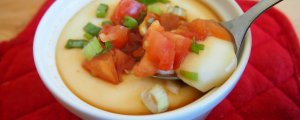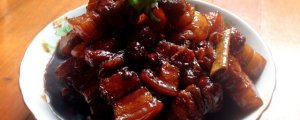
&Quote; pattern & quote; baguette
(163968 views)
When I saw someone making bread with quinoa, I thought I'd try it myself. I made it according to the classic 70-100 water powder ratio of the staff. It's just that I've re mixed some flour. Then I add steamed quinoa and black sesame into it. These two fresh sticks with good appearance are full of toughness. They are not only healthy to eat, but also delicious in the mouth. The bread made in this way has the appearance of a Dharma stick. But the materials used are various (there are really eight kinds except water). It's a headache for me to name it. I can't call it the Dharma stick. Consider again and again. Finally, I decided to call it the & quot; pattern & quot; staff. It is intended to pay homage to the & quot; pattern & quot; years of every food lover who has the courage to try and innovate. If you like it, try it.
Cooking ingredients
Cooking Steps

Step1:Mix all solid parts of the main dough evenly.

Step2:Add all the warm water, mix evenly and make the dough. No need to knead the dough by hand. It can be done with a silica gel shovel. At the same time, soak the quinoa in water. It is better to change the water at least once while waiting for the dough to ferment.

Step3:The first fermentation is basically finished. What we get is a very wet and soft dough. Do not feel the dough is too wet to add flour.

Step4:Filter out the water from quinoa. Steam in the upper pot and let it cool. I steamed the sweet potatoes by the way. It took me about ten minutes. The weight after steaming is about 135g.

Step5:Take black sesame. Remove impurities. Dry it after cleaning or use kitchen paper to absorb water.

Step6:Mix the steamed quinoa and black sesame into the main dough after fermentation, divide it into two pieces, stretch it by hand, roll it up, stretch and shape it. Don't be afraid to add too much flour to the dough. It's better not to touch your hands when shaping.

Step7:Use a scalpel to cut a few bevels. Sift some high gluten flour on the surface. Put a plate of hot water and a plate of hot water into the oven at the same time. Turn the oven temperature to the maximum for one minute, then turn off the power. Wait for 2 hours. Complete the second fermentation.

Step8:That's what it looks like after the second fermentation. It's about twice as big as before. The cut is much bigger.

Step9:Take out the water plate put in the oven before. Put the bread blank in the middle of the oven. Open the oven without preheating. Heat up and down for 220 ℃ for 10 minutes. Set to 200 ℃ and bake for another 10 minutes. According to personal preference for the degree of coloring and the hardness of the crust, cover the bread with aluminum foil when the color is up to the expectation, or extend the baking time. I didn't cover it. That's what I got. The skin color is moderate. And it's not crisp.

Step10:When it's out of the oven, you can cut it and enjoy it. Loose but tough inner structure and tricolor quinoa and black sesame bring different layers of taste to bread. You only know that bread can have this possibility before you try. We must firmly believe that the bread with small health burden but first-class taste must come from our own kitchen. You will try and explore constantl
Cooking tips:The tip I gave this time is similar to what I left in the comments section of my rye bread. Making bread is a thing that can really play freely within the tolerable range. As long as it doesn't violate the basic principles. The dough humidity is OK. The fermentation doesn't fail and the baking temperature is almost the same. It's not far from success. The whole process of bread making tests patience and firm belief. Never bake before the fermentation is finished. Never add flour when the dough is too wet. Otherwise, the final finished bread will not be a failure, but it may not achieve the effect you expect. You can also try it yourself with different ingredients. All in all. Keep trying. Let yourself slowly experience and enjoy the unique pleasure of eating your own bread. There are skills in making delicious dishes.
 Chinese Food
Chinese Food












